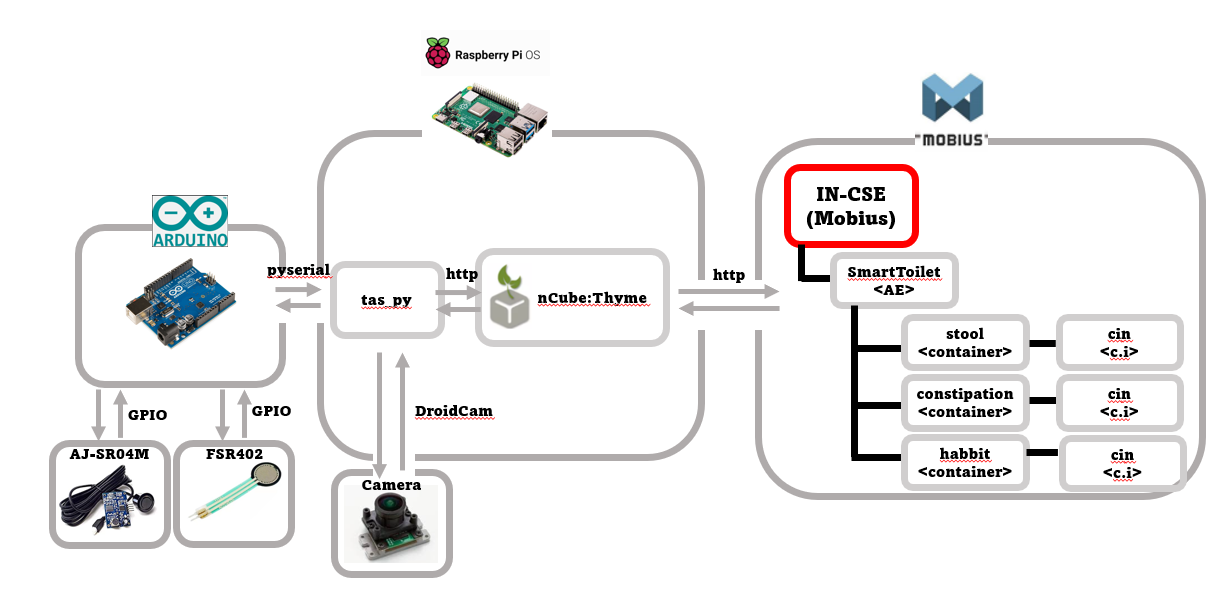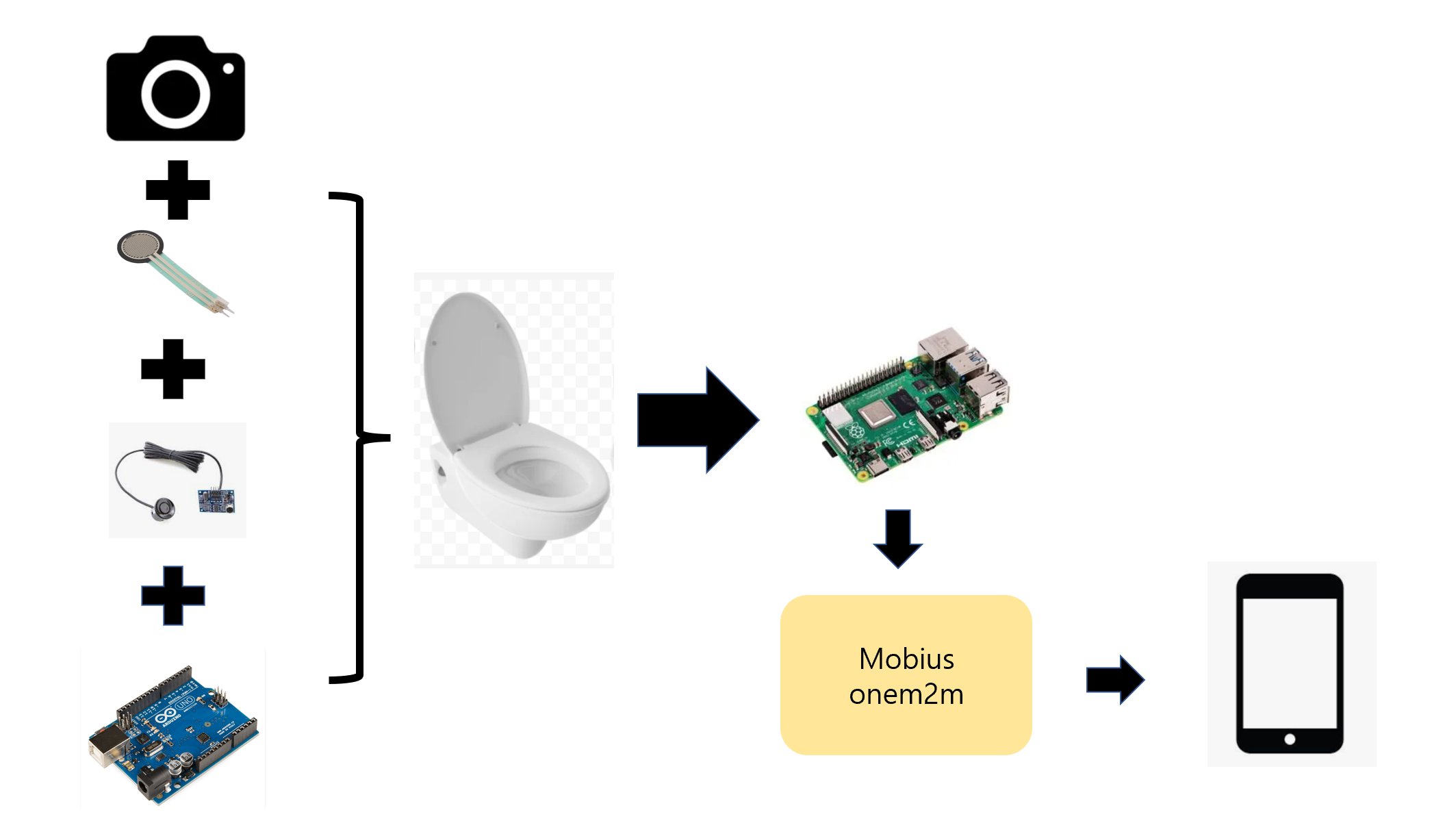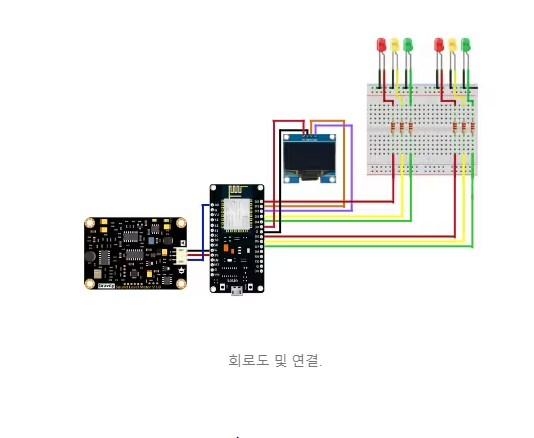Bowel movements have become an important indicator of health for modern individuals. Our Smart Toilet will assist you in maintaining healthy bowel activity. Have you ever experienced digestive issues or an upset stomach in the morning? It could be a sign of an underlying problem with your gastrointestinal system. Our Smart Toilet's bowel monitoring system starts working as soon as you sit on the toilet. Through Arduino's pressure sensors, it tracks the time you spend sitting and measures the duration until your bowel movement occurs, helping to identify any signs of constipation. To confirm the occurrence of a bowel movement, an ultrasonic sensor is employed. Furthermore, even after your bowel activity has finished, the system measures the unnecessary time spent sitting, providing warnings regarding potential anal disorders. Once the bowel activity is completed, the system detects your departure from the toilet using the pressure sensors and the connected camera captures an image of your stool. The image is then analyzed using our developed image modeling tool, which returns results indicating the condition of your stool, such as healthy bowel, diarrhea, bloody stool, or lack of bowel movement. With accumulated analysis results, you can periodically monitor your health status. Our IoT system monitors your bowel activity in real-time, assisting in personal health management. By optimizing the time spent on the toilet and continuously managing your health, our system provides convenience and safety to users.
Problem
Extensive evidence highlights the concerning state of stomach health in modern times. Rising cases of digestive disorders, such as IBS and acid reflux, point to widespread issues. Unhealthy diets, high stress levels, sedentary lifestyles, and excessive antibiotic use disrupt gut bacteria, resulting in bloating, indigestion, and irregular bowel movements. Moreover, the prevalence of processed foods and insufficient fiber intake exacerbates digestive problems. Addressing these trends requires prioritizing stomach health through balanced nutrition, stress reduction, and proactive monitoring.t usage can be utilized for health research and policy-making. We hope that our system will continue to evolve, enhancing the quality of people's lives.
Solution
Major facts stated above shows that early detection of digestive issues and gastrointestinal disorders is essential. Stool analysis emerges as a valuable solution, providing crucial insights into your digestive system. Analyzing your stool is of paramount importance for your health and well-being. It provides valuable insights into your digestive system, revealing any potential issues or abnormalities. Changes in stool consistency, color, or frequency can indicate digestive disorders, infections, or dietary problems. By regularly monitoring your stool, you can detect and address these concerns early, promoting early intervention and better overall health. Take control of your digestive health by prioritizing stool analysis as a vital part of your wellness routine.
Stool Monitoring via Smart ToiletI. Providing informationsOur Smart Toilet provides specific analysis informations below
1. User’s toilet habit
- period of time during the user’s toilet usage
- warnings based on whether the user keeps sitting after the end of the evacuation
2. Detailed stool analysis (using image classification tool)
- color analysis result
- shape analysis result
1. Stool Classification Model
In order to build a system that measures the user's health based on the shape of their stool, a model capable of distinguishing different stool shapes was required.
The Bristol stool chart is a simple classification chart that categorizes stool shapes into seven types. We divided types 2-4 as 'normal', types 1 and 5-7 as 'abnormal', and added an additional category for bloody stools, resulting in a total of three types.
Implementation:
The model used for implementation was EfficientNet-B0, created through transfer learning. EfficientNet is an excellent image classification model with a CNN structure. Considering the Raspberry Pi's computing environment, we chose the lightest model, B0.
We collected data for training through web scraping of images of stools in toilets, gathering approximately 2, 500 images. After excluding low-quality images and those with mixed stool types, we selected 1, 189 images. Since the model needed to determine if the user had only urinated or also had a bowel movement, we included 99 images of stools with urine only. In total, 1, 288 images were used for training.
The training results with a batch size of 12 were as follows: maximum accuracy of 0.956. We used these weights when implementing the device.
2. OneM2M implementation
Results obtained from sensors and devices, such as Arduino, in Raspberry Pi are sent to the MOBIUS oneM2M platform via HTTP. The received data is in the form of [x, y, z], where x represents the condition of the user's stool: healthy stool (x = 1), diarrhea (x = 2), bloody stool (x = 3), or no observation (x = 0). Additionally, the y value indicates the time it took for the user to start defecating after sitting down, enabling the assessment of healthy bowel habits (y = 0) or constipation (y = 1). Lastly, the z value measures the duration the user remains seated after defecation, determining if the bowel habits are healthy (z = 0) or unhealthy (z = 1). This [x, y, z] array is stored in the instance of a container within a container within an Application Entity (AE) in the oneM2M server. To visualize the stored values on the dashboard, we utilized Freeboard. In Freeboard, the [x, y, z] array information is transformed for easier representation.
3. Schematic Diagram
This section shows how the whole system is composed
1. Prototype overview / Hardware structure
2. Operation
The prototype performs the task of measuring three main pieces of information, processing them, and sending them to the server. This is accomplished through following devices.
- Raspberry Pi connected to a remote camera
- an ultrasonic sensor
- pressure sensor.
The measured data is processed on the Raspberry Pi, and the processing results are transmitted to the OM2M server. The data processing process contains following parts:
First, the user's bowel habits are analyzed based on the duration of time spent sitting on the toilet. If the ultimate sitting time is long, it is processed as a suspicion of constipation and transmitted. Additionally, if the time between the last bowel movement and standing up from the toilet is long, it is processed as a bad habit and transmitted. The moment of bowel movement is captured by the ultrasonic sensor detecting the drop, while the sitting time is measured by the pressure sensor installed beneath the toilet.
Second, an image analysis tool is utilized to analyze pictures of the stool, distinguishing them as healthy, diarrhea, or bloody, and transimitting them accordingly.
3. Capability of the prototype
Capability of the prototype is as shown below.
4. Display
The dashboard features three sections that display the analysis for the three types of stool assessments
IV. DemonstrationThis part shows how the prototype actually work.
1. Scenarios
Here are the demonstration scenarios, with the other two analyses assumed to be fixed for each scenario:
- Checking the Three Stool States (Healthy Stool, Diarrhea, Bloody Stool)
- Constipation Check (Constipation, Normal)
- Bad Habit Check (Bad Habit, Normal)
2. Demonstration video link
Scenario 1
Scenario 2
Scenario 3
Scenario 4
Scenario 5




_ztBMuBhMHo.jpg?auto=compress%2Cformat&w=48&h=48&fit=fill&bg=ffffff)













Comments
Please log in or sign up to comment.